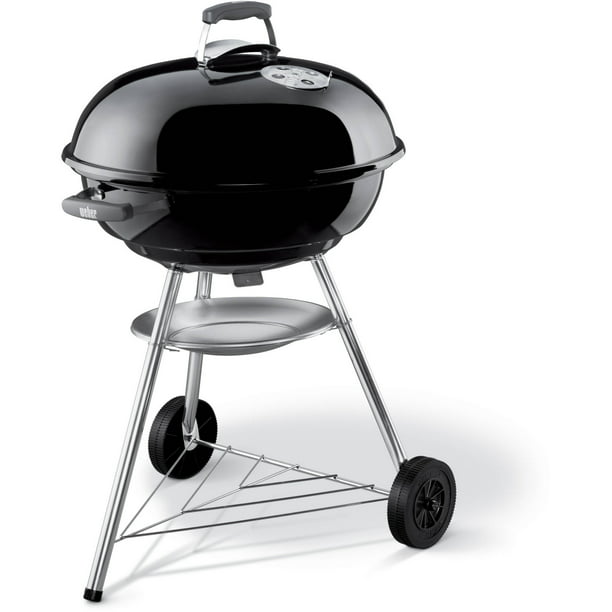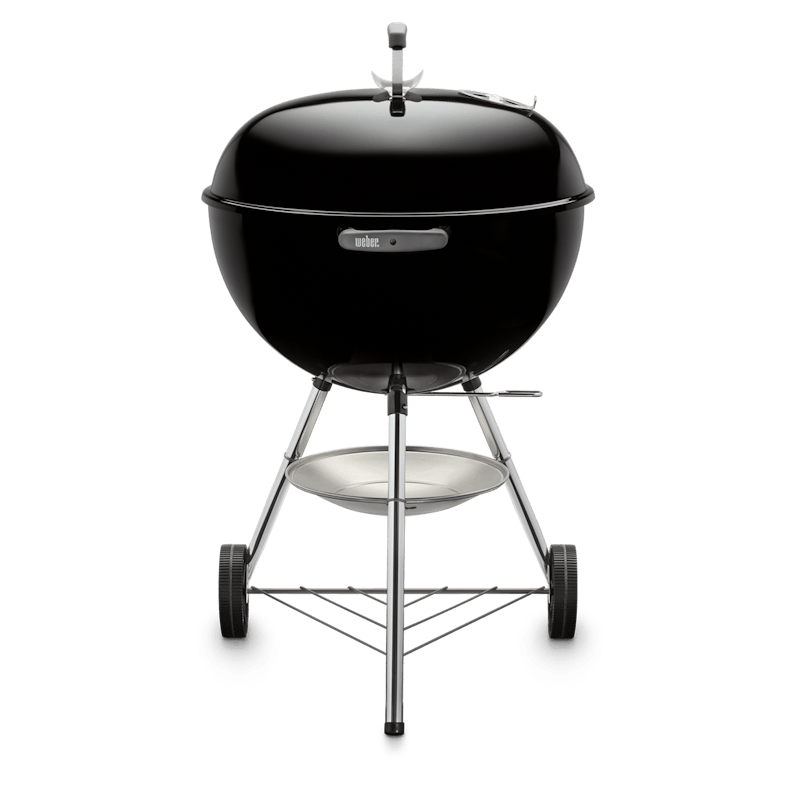First, I hope my posts last night made sense. I stupidly got on the Dope post-Ambien, saw your thread, and thought “oh! something I know some stuff about! Yay! I’ll post a quick reply before the drugs kick in!” I really do know better.
Anyway. Onward.
Excellent. Wal-Mart carries a Weber grill that, on brief inspection, looks like any other 22" Weber grill but at a significantly lower price.

Good deal, right? Well, on closer inspection it’s clear the Wal-Mart specific grill is not the same a regular 22" inch kettle:

Note the Wal-Mart specific version is much shallower (making it unable to be used as a smoker) and, most significantly, has the same small air intake at the bottom that the Smokey Joe uses. Totally insufficient.
I have something akin to these, which are handier than I thought they would be: you can slide the handle forward to remove the food from the skewer, and then everything goes in the dishwasher. Easy-peasy.
Bingo. That “match-light” charcoal is really good for starting campfires and… not much else. Now, what it might be good for in your situation is learning temp control. Get a chimney starter, fill it with the Match-Light, get it burning, then spread it on the ash grate and start playing around with the air intake controls and the thermometer to really learn what does what. Generally I always leave the top vent wide open and use the bottom vent to control the airflow and thus the heat. I find opening or closing the vents ~1/4 inch will make about a 25°- 50 ° difference on the grate. But I live where it’s humid, rarely snows but rains 9 months of the year, so what’s normal for me likely isn’t for others.
One of these thermometers is great because you can use one probe in your food and the second probe can be used to measure the temp at the grate: attach it with a binder clip or a dedicated probe clip. The thermometer that’s on the lid – if it even came with one, which mine didn’t – isn’t accurate at all.
I’ve never even heard of these, and the concept seems weird: burning spices seems like it would just leave a burnt taste to your food. Marinate the meat or use a dry rub if you want different flavor profiles or, after you’ve mastered the heat control, try your hand at smoking. Strong woods like mesquite are good for rich cuts of red meat, fruit woods are better for milder meats like fish and poultry. Except salmon. Salmon and alder wood are BFF’s and that’s a good thing. You could do the foil method like you mentioned (or use one of these), but using lump wood and placing it on the coals right before you place your food on the grill is a good way to go – just make sure that there isn’t so much air that it’ll actually catch flame, and not so little that it’ll smolder so bad as to deposit soot on your food ::shudder::
Ultimately, this is like any hobby. You can go broke buying all the latest fancy things (there are a lot of neat accessories for the 22” kettle, which is one reason I chose that model specifically), and every Tom, Dick, and Harry will come out of the woodwork to tell you how you should do this or that (kinda like I’m doing…). But really, just play around with it and have fun. The Weber kettle is so versatile that, once you get the heat management down you can pretty much do whatever you want to.
Oh. One last thing: as you learn be aware of how long it takes to go from “I’m going to grab a beer, go outside, and light up the bbq” to “yup, she’s ready. Time to throw the steaks on.” I always give the whole thing a quick hose-down before filling and lighting the chimney. (I once found a wasp nest being built inside, and another time found a black widow chilling out inside. Not taking any chances again.) Getting the coals hot takes 20 minutes to half and hour, and then I spread the coals, set the air intake, and give the grill 5 or 10 minutes to come up to temp and stabilize before actually starting to cook. I always figure 45 minutes of prep and preheat. So factor that into your cooks as well.


